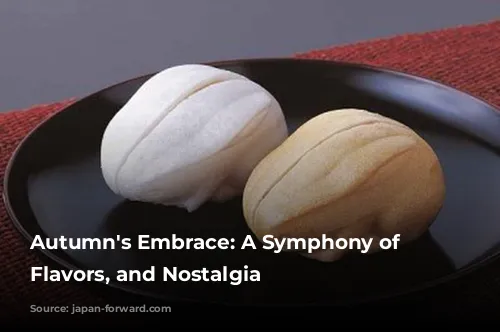Autumn has arrived, bringing with it a subtle shift in the air, a gentle cooling after the intense summer heat. The season’s arrival marks the end of a long, hot summer in Japan, and with it comes a quiet, almost melancholic feeling.

A Dusk Painted in Crimson
As the sun begins its descent, the sky transforms into a breathtaking canvas, painted in hues of deep crimson. The town takes on a new life, bathed in this warm, inviting glow. Passersby pause, captivated by this fleeting moment of beauty, before the night falls. This is a unique spectacle that only autumn can offer.

The Beauty of a Sunset
Sei Shonagon, a celebrated Japanese writer, famously captured the essence of autumn in her work, The Pillow Book, stating that “Autumn is at its finest at dusk.” Her words resonate with the sentiment of many, who find a special magic in the beauty of autumn sunsets. This magic is not just a feeling but a scientific marvel.
Kenichiro Araki, a renowned cloud researcher, provides an explanation for this captivating phenomenon. “Autumn is known for its high skies and the spread of cirrus and altocumulus clouds, which often create magnificent, blazing sunsets,” he explains. The unique atmospheric conditions of autumn create an environment where the sunsets become a breathtaking spectacle.

The Science Behind the Sunset
The reason the sky turns red at sunset is a result of the sun’s position and the way light interacts with the Earth’s atmosphere. During the day, the sun is high in the sky, allowing blue light to scatter widely, giving the sky its blue hue. As the sun sets and lowers its position, sunlight has to pass through a greater length of the atmosphere. This longer journey causes the shorter-wavelength blue light to scatter out, leaving the longer-wavelength red light to reach our eyes.
“The red light we see at sunset has traveled through an intense scattering process in the atmosphere,” says Araki.
This phenomenon is also the reason why red light is often used in traffic signals to indicate “stop” or signal danger, as its longer wavelength allows it to travel further and penetrate fog or other atmospheric conditions.
Sunset Folklore and Scientific Truth
Many people believe that a beautiful sunset indicates a sunny day will follow. This belief is rooted in the fact that weather systems typically move from west to east. Therefore, a cloudless western sky at sunset is often interpreted as a sign of clear weather the next day. However, Araki cautions against taking this belief as a guarantee.
“In reality, this is often not the case,” he says. “The appearance of the sunset can change significantly depending on current weather conditions. Each sunset is a unique miracle, seen only in that moment. They should be enjoyed as once-in-a-lifetime encounters.”
Seeking the Perfect Sunset
While autumn sunsets can be enjoyed anywhere, certain locations offer particularly breathtaking views. A list of the top 100 Japanese sunsets curated by an NPO in Takasago City, Hyogo Prefecture, reveals that metropolitan areas often lack prime spots for sunset viewing. This is largely due to the common “high west, low east” atmospheric pressure pattern, which favors Western Japan for sunset viewing.
Despite the geographical limitations, the profound impact of a sunset’s deep red light transcends location, evoking nostalgia and touching the hearts of admirers wherever it is seen.
Autumn’s Sweet Delights
Beyond the breathtaking landscapes, autumn brings with it a delightful array of seasonal treats. September 17th marks Otsukimi, the moon-viewing night, a time when rabbit-shaped sweets fill store displays, adding to the festive atmosphere. The dark markings on the moon’s surface are traditionally seen as a rabbit pounding mochi with a mallet and mortar, inspiring the creation of these charming confectioneries.
Among these treats, some have been cherished by locals for generations. One such treasure is the Usagi (rabbit) Monaka from Usagiya, a confectionery shop in Utsunomiya City.
This traditional sweet comes in two varieties: one with a fragrant, roasted shell filled with rich, flavorful red bean paste, and another with a white shell packed with smooth, sweet white bean paste. Each piece is a testament to the artistry of Japanese confectionery.
“The founder was born in the Year of the Rabbit, so when the shop was established in 1915 — another Rabbit year — they chose to name it Usagiya,” explains Masahiko Hiyama, the fourth-generation owner.
The monaka features charming long ears and a delicate sweetness that melts in the mouth. “The shape has remained unchanged since our founding. As part of our shop’s own cultural heritage, we are committed to preserving and cherishing this special confection,” says Hiyama.
From the vibrant colors of the autumn sky to the delicate flavors of traditional sweets, autumn in Japan offers a sensory journey that celebrates the beauty and traditions of the season. The changing seasons provide a constant reminder of the cycle of life, inspiring a sense of wonder and appreciation for the simple yet profound beauty that surrounds us.

